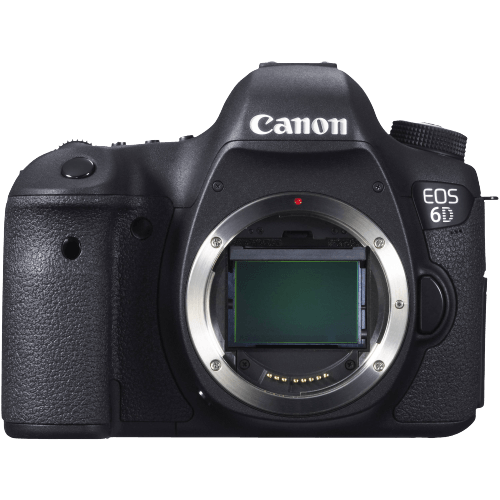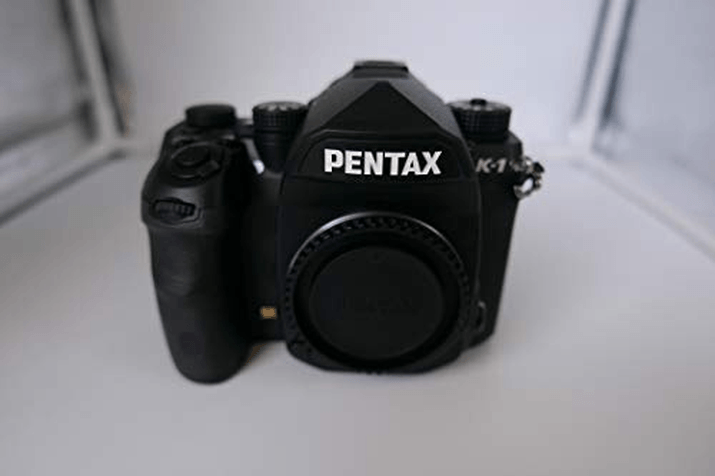Canon EOS 6D vs Pentax K-1 Comparison
Canon EOS 6D

Pentax K-1

The Pentax K-1 outperforms the Canon EOS 6D with a score of 77/100 compared to the 6D’s 59/100. Both cameras are DSLRs and were released in 2012 and 2016, respectively. They share similarities in size, with the 6D measuring 145 x 111 x 71mm and the K-1 at 137 x 110 x 86mm.
The K-1 excels in its lower launch price of $1800, compared to the 6D’s $2099. However, the Canon EOS 6D has the advantage in weight, being lighter at 770g (1.70lbs) compared to the K-1’s 1010g (2.23lbs).
Taking these factors into account, the Pentax K-1 is a better value option with its higher score and lower price, while the Canon EOS 6D may be preferable for those seeking a lighter camera.
Canon EOS 6D vs Pentax K-1 Overview and Optics
The Pentax K-1 outperforms the Canon EOS 6D in optics with a score of 85/100, compared to the Canon’s 61/100. Both cameras share some common specifications, such as having a full-frame CMOS sensor and similar shooting speeds (4.4 for the Pentax K-1 and 4.5 for the Canon EOS 6D). They also have different lens mounts, with the Canon using EF and the Pentax using KAF.
The Pentax K-1 boasts a higher megapixel count of 36.4, which contributes to its superior image quality. Additionally, the K-1 has a higher DXOMARK sensor score of 96, compared to the Canon’s 82. This means the Pentax K-1 captures more detail and has better low-light performance. The K-1 also offers image stabilization, a feature that the Canon EOS 6D lacks. This allows the Pentax K-1 to produce sharper images, especially in low-light situations or when using longer exposures.
On the other hand, the Canon EOS 6D has a slightly faster shooting speed at 4.5 frames per second, compared to the Pentax K-1’s 4.4. This small advantage may be beneficial for capturing fast-moving subjects or action shots. However, this difference is minimal and may not significantly impact the overall shooting experience.
Considering these factors, the Pentax K-1 holds a clear advantage in optics, with a higher megapixel count, better sensor performance, and image stabilization. The Canon EOS 6D offers a marginal advantage in shooting speed but falls short in other areas. Therefore, the Pentax K-1 is the superior choice for those prioritizing optical performance in their camera selection.
Canon EOS 6D vs Pentax K-1 Video Performance
The Pentax K-1 outperforms the Canon EOS 6D in video capabilities, earning a score of 70 out of 100, compared to the EOS 6D’s 43. Both cameras share some common specifications in this area, such as having Full HD video resolution and maximum video dimensions of 1920 x 1080. However, the K-1 surpasses the 6D in other aspects, making it the superior choice for video recording.
The Pentax K-1 offers a higher maximum video frame rate of 60fps, while the Canon EOS 6D only reaches 30fps. This allows the K-1 to capture smoother and more detailed footage, especially in high-motion scenes. Additionally, the K-1 has a built-in time-lapse functionality, a feature that the 6D lacks. This enables users to create stunning time-lapse videos without needing additional equipment or software.
The Canon EOS 6D, although inferior in video performance, may still be suitable for casual video recording or for users who prioritize photography over videography. The lower score does not make it a poor choice, but it does highlight the limitations the camera has in comparison to the Pentax K-1.
Considering the differences in video capabilities, the Pentax K-1 emerges as the better option for those who prioritize video performance. With a higher frame rate and built-in time-lapse functionality, the K-1 provides a more versatile and powerful video recording experience. The Canon EOS 6D, while still capable of recording high-quality videos, falls short in comparison.
Canon EOS 6D vs Pentax K-1 Features and Benefits
The Pentax K-1 wins the feature comparison with a score of 59/100, while the Canon EOS 6D scores 57/100. Both cameras share some common specifications, such as a 3-inch screen size, no touchscreen, GPS, WIFI, and no Bluetooth connectivity.
The Pentax K-1 outperforms the Canon EOS 6D with its 3.2-inch screen and flip screen feature. The larger screen size provides a better view of the subject, and the flip screen allows for more versatile shooting angles. The K-1’s screen resolution is slightly lower at 1,037,000 dots compared to the 6D’s 1,040,000 dots, but this difference is negligible and does not impact the overall viewing experience.
In contrast, the Canon EOS 6D does not offer any significant advantages over the Pentax K-1. Both cameras have GPS and WIFI functionality, allowing for easy geotagging and wireless image transfer. They also lack Bluetooth, which could be seen as a disadvantage for those who prefer a more seamless connection with their devices.
To conclude, the Pentax K-1 is the better camera in terms of features due to its larger screen size and flip screen functionality. The Canon EOS 6D, while sharing some specifications with the K-1, does not offer any notable advantages. Users may find the K-1’s features more useful and enjoyable for their photography needs.
Canon EOS 6D vs Pentax K-1 Storage and Battery
The Pentax K-1 outperforms the Canon EOS 6D in storage and battery with a score of 68/100, compared to the Canon’s 45/100. Both cameras accept SD, SDHC, and SDXC memory cards, but the Pentax K-1 has two memory card slots and is UHS-I compatible, while the Canon EOS 6D has only one slot. This gives the Pentax K-1 more storage capacity and faster transfer speeds.
The Canon EOS 6D, however, has a longer battery life of 1090 shots, compared to the Pentax K-1’s 760 shots. The Canon uses an LP-E6 battery, while the Pentax uses a D-LI90 battery. Neither camera offers USB charging.
In terms of storage and battery, the Pentax K-1 is superior due to its extra memory card slot and UHS-I compatibility. The Canon EOS 6D’s advantage lies in its longer battery life, which may be important for extended shooting sessions.
Canon EOS 6D vs Pentax K-1 Alternatives
Still not sure which camera to choose? Try these popular camera comparisons for more inspiration:
